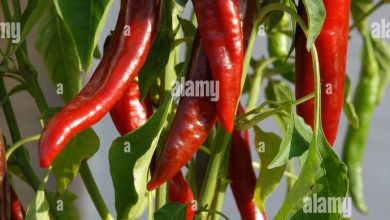Cabbage Fly (Phorbia brassicae): [Characteristics, Detection, Effects and Treatment]
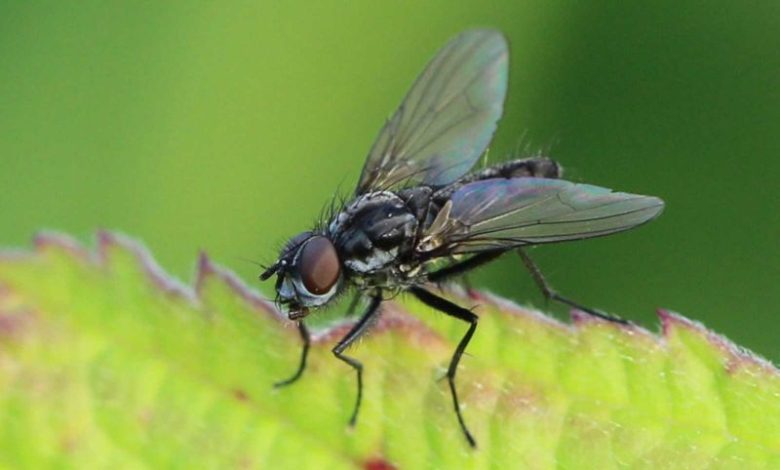
What is the cabbage fly?
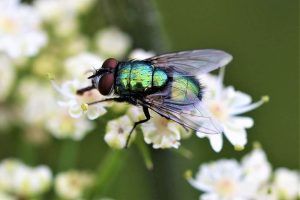 One of the most serious enemies of agriculture, at all levels, is the infestation of crops by the presence of the whitefly or Cabbage fly, a pest that is very resistant to low temperatures that can wreak havoc with great economic losses.
One of the most serious enemies of agriculture, at all levels, is the infestation of crops by the presence of the whitefly or Cabbage fly, a pest that is very resistant to low temperatures that can wreak havoc with great economic losses.
With the scientific name Phorbia brassicae, they have a special predilection for the neck of Cabbages, but in general they attack all cruciferous species.
The characteristic attack method of this plague is the construction of tunnels and galleries in the stems of the plants, in order to suck all the sap, an invasion carried out by the larvae, which can have such a lethal power that they end up, if we we neglect, leaving the stem dry, hollow, with the usual ruin of the entire harvest.
This damage extends to all cruciferous plants, both cultivated and spontaneous, since they are very voracious and can procreate up to three generations in a year, more than enough offspring to ruin entire crops.
How can we identify it?
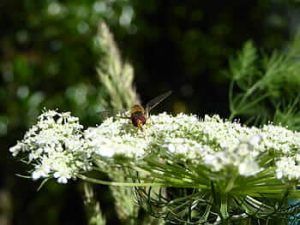 The so-called whitefly also has the following characteristics and habits. Let’s see.
The so-called whitefly also has the following characteristics and habits. Let’s see.
In the case of cabbages, the attack of the larvae of this fly begins at the neck, where they carve galleries that flood the entire stem to consume all the nutrients, to the point that they leave it empty of content.
But when they attack napiform cruciferous plants such as turnips and radishes, they then go towards the fleshy root, which is also dried by the powerful sucking work of the larvae.
Morphology
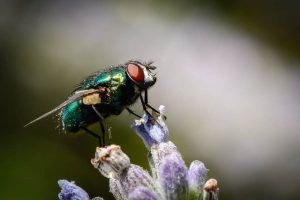 The larvae have a growth of up to about 10 mm, with a whitish appearance and without legs.
The larvae have a growth of up to about 10 mm, with a whitish appearance and without legs.
When they reach adulthood, they measure between 5-7mm and are similar to houseflies, but have a grayish-yellowish color and very red eyes.
The species Delia radicum (it also attacks the roots of cabbages) has 3 darker lines that cross the abdomen while the Delia platura has a brown dorsal line.
Lifecycle
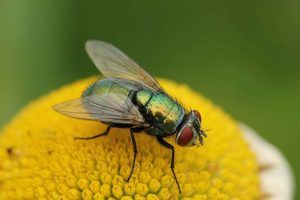 This species has a life cycle that extends up to three generations throughout the year.
This species has a life cycle that extends up to three generations throughout the year.
In the first, it takes advantage of the weeds to grow and multiply, until it jumps, already in the second generation, towards the young plants of the crops, destroying them with direct attacks on roots and leaves, if forceful actions are not taken. to destroy them, before they reach the epicenter of the central stem.
The fly, in its chrysalis phase, shelters itself from the effects of winter. But when spring arrives, the first adults will burst, hatching to fulfill the massive mission of reproducing and laying eggs in large batches, around the roots of plants and also seek to do so in the cracks of the earth that gives soil to crops.
The larval stage appears after 4-8 days of invasion of the roots of the affected cruciferous plant, until reaching the base of the stem and the petioles of the leaves. Shortly after carrying out this intense task of extracting nutrients, the pupae appear, which come to the surface of the earth showing a body of about 5 cm.
Briefly, the identifying characteristics of the presence of this pest are the following:
- The leaves acquire a grayish hue that disfigures the typical green color of chlorophyll activity. A waxy appearance pervades the entire vegetative body, until the plant withers and dies.
- Another less serious consequence is that the plants stop their growth process and are stunned, they are small.
- In the case of the roots, the damage is so noticeable that many sprout, come to the surface of the earth, because they become necrotic until they rot, due to the attack of the larvae of this very harmful fly, which can also be seen in the soil when they behave like a pest by invading the entire root system of the plant.
What plants does the cabbage fly affect?
The Cabbage fly is a pest that affects broccoli crops, Brussels sprouts, cauliflower and other cabbages, such as radishes, turnips, among others.
How to combat the cabbage fly?
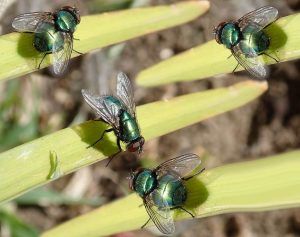 Nothing better than prevention to combat this devastating plague of cabbage.
Nothing better than prevention to combat this devastating plague of cabbage.
Some of the most important tips are the following, but it should always be borne in mind that this whole problem begins when weeds are allowed to grow in the crop or garden, because this is the home of the first generation of attackers.
Let’s see where to begin the defense against this powerful enemy of cabbages.
soil preparation
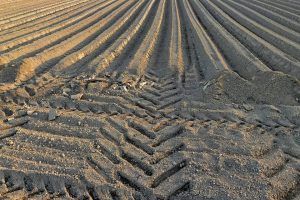 It is essential to apply intensive plows when preparing the land for the new crop, because aerating the soil always removes the buried pest.
It is essential to apply intensive plows when preparing the land for the new crop, because aerating the soil always removes the buried pest.
In this process, it will also be mandatory to remove any trace of the previous crop, to avoid contaminating the new crop.A good granulated disinfectant is very opportune as a preventive measure. Fenthion, Diazinon and Dimethoate are recommended.
Crop rotation
But it is also good to alternate cruciferous crops, at least once a year.These first actions will keep the diptera at bay, away from the planting.
Biologic control
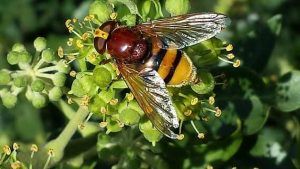 In organic farming, a procedure that begins, as we have already said, with the elimination of all weeds in the field, especially the bad cruciferous ones, works very well, because the pests lodge in these spontaneous species.
In organic farming, a procedure that begins, as we have already said, with the elimination of all weeds in the field, especially the bad cruciferous ones, works very well, because the pests lodge in these spontaneous species.
It is considered one of the most effective methods, which should be combined with cruciferous rotation with other compatible crop associations.It is also advisable to eliminate the application of fresh animal manure and use green manures, because they attract the pest.
Other effective measures are:
- When the presence of the fly is exaggerated, it is necessary to cover the young crops with a protective mesh, a very effective technique in the fight against delia radicum.
- The fertilization indicated by the specialists and irrigation in balance, are also proper practices that prevent the appearance of the insect. That is why nitrogen -rich fertilizer is the most correct because it accelerates the development
- Use of yellow chromatic traps, to catch them when they remain adhered to the glue that we use, mixed with the paint.
- Agricultural lime is applied in acidic soils to kill bugs that lodge in the soil, but its application is not recommended in soils with a pH greater than 7.5.
- Irrigation with a solution of Neem oil also works, applying between 3-4 drops per liter of water for irrigation, trying to pour it into most of the plant’s vascular system to repel pests of any kind. Avoid doing it when the harvest is near.
- Lastly, if the pest has spread widely over the plant, unfortunately its total destruction is recommended, without leaving traces on the ground to prevent the contamination from spreading even more.
What are the best products to eliminate cabbage fly?
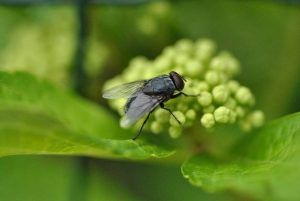 Although care for the environment should always prevail, minimizing the continued use of chemical insecticides, when sowing is finished, it is advisable to immediately apply specific agrochemicals, because pesticides are effective in preventing the cabbage fly from doing its thing.
Although care for the environment should always prevail, minimizing the continued use of chemical insecticides, when sowing is finished, it is advisable to immediately apply specific agrochemicals, because pesticides are effective in preventing the cabbage fly from doing its thing.
Specific pesticides such as Lambda cyhalothrin 2.5% and Tau-fluvalinate 24% have a very good response against the Cabbage fly plague, but must be applied under strict sanitary controls to avoid unwanted effects on crops.

![Photo of Fruit Flies: [Effects, Detection and Treatment]](https://www.complete-gardening.com/wp-content/uploads/2022/08/Como-eliminar-las-moscas-de-la-fruta-300x212-1.jpg)
![Photo of Garlic Weevil (Brachycerus algirus): [Characteristics, Detection, Effects and Treatment]](https://www.complete-gardening.com/wp-content/uploads/2021/06/Que-es-el-gorgojo-de-los-ajos-390x220.jpg)

